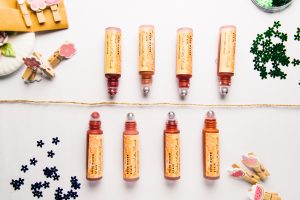Taylor Swift’s recent mini-concert in Shanghai was nothing short of dazzling. Bedecked in a stunning geometric ensemble and thigh-high boots, the singer crooned her latest singles “Me!”, “You Need to Calm Down”and “Lover”. Some viewed this spectacle live at the Mercedes-Benz Arena, while others watched from the comfort of their television screens.
None of this was a promotional effort to publicise her latest album, nor was Shanghai a stop one of her world tours. No, all of this was to commemorate 11.11 Global Shopping Festival, a gargantuan shopping event that has grown rapidly to become a full-scale cultural proceeding, complete with its own set of rituals and practises employed by zealous shoppers wanting to get their hands on irresistible deals and discounts.
What started as a mega-sale day for Chinese youth who wanted a way to celebrate their lack of romantic companionship has ballooned into a global celebration of consumerism, freedom of choice, and, of course, capitalism. Spearheading this retail revolution is Chinese ecommerce giant Alibaba, which earned an eye-watering $30 billion in salesfor this year’s Singles’ Day. Singles’ Day has grown to be so staggeringly massive, that major shopping holidays popular in the Western world, such as Black Friday and Cyber Monday, pale in comparison.
The event isn’t limited to China: Southeast Asia seems to have caught the shopping bug known as Singles’ Day. Regional ecommerce retailers such as Lazada received a record-worthy 3 million orders within the first hour of 11th November, 2019. Fuelling this consumerist frenzy is the region’s robust Internet economy, which is projected to be worth $300 billion by 2025, and which is led by shopping via mobile channels. After all, APAC is home to more than half the world’s mobile subscribers.
While major Internet-driven sales are generally lucrative for brands, Singles’ Day is the most scrumptious pie – which means retailers both local and international are fighting tooth-and-nail to get a share of. If you want in, here’s what you must understand:
Young people are your friends:
Yes, it is Millennials and Gen-Z kids who are quick to flock to ecommerce sites hoping to get their hands on massively discounted goods that otherwise might have been out of reach for them. Ignoring these groups because you think they do not have adequate disposable income will be the beginning of the end for your brand.
After all, it is the people who grew up on the Internet who can expertly navigate even the most cluttered ecommerce interface and emerge triumphant with a big shopping basket. Remember why Singles’ Day exists in the first place – for youth people to celebrate their independence.
Mobile is everything:
If all customers can do is access and browse a smaller version of your brand’s website on mobile, you need to rethink your mobile strategy. Simply offering a mobile-optimised website is not enough in this age of technology, when bigger players are devising novel ways to enhance the consumer experience.From immersive multimedia journeys to virtual reality, interactive games and live-streaming, companies are pulling out all the stops to ensure consumers lose themselves in the story that the brand experience is trying to convey. Several Chinese brands have found success in live-streaming, with a beauty brand earning 100 million yuan in a matter of six minutes. In fact, to get a jump on the excitement for 11.11, beauty brand Estée Lauder used live-streaming campaigns to entice people to buy its products as early as October.
In 2018, more than 90%of Singles’ Day sales were made via a smartphone. And given that Southeast Asia’s penchant for handheld devices is well-documented, it would be wise for you to start perfecting your brand’s mobile experience.
Strong brand image:
Keep in mind that during Singles’ Day, most people are usually searching for the best deals. This means that their loyalty can go out the window and their purchases will go to the brands that can give them the most bang for their buck.However, if you can tie brand loyalty to great deals, you’ll find yourself on the winning side of the shopping event.
Instead of trying to please everyone with grand marketing efforts and deep discounts, use data and insights to help you focus on satisfying niche consumer segments that have patronised your business from day one. Work to boost greater brand loyalty amongst people who would naturally gravitate towards your brand, and make sure they are incentivised to find the right products at the right prices at the right time.
Singles’ Day 2020 will likely be an even grander, more extravagant affair than 2019 saw, with brands and businesses going head-to-head in order to grab precious consumer dollars. Bump up your digital strategy, know your consumers, and success will be yourself.
Start planning ahead NOW – write to us at [email protected] for a kickass Singles Day 2020 strategy.



